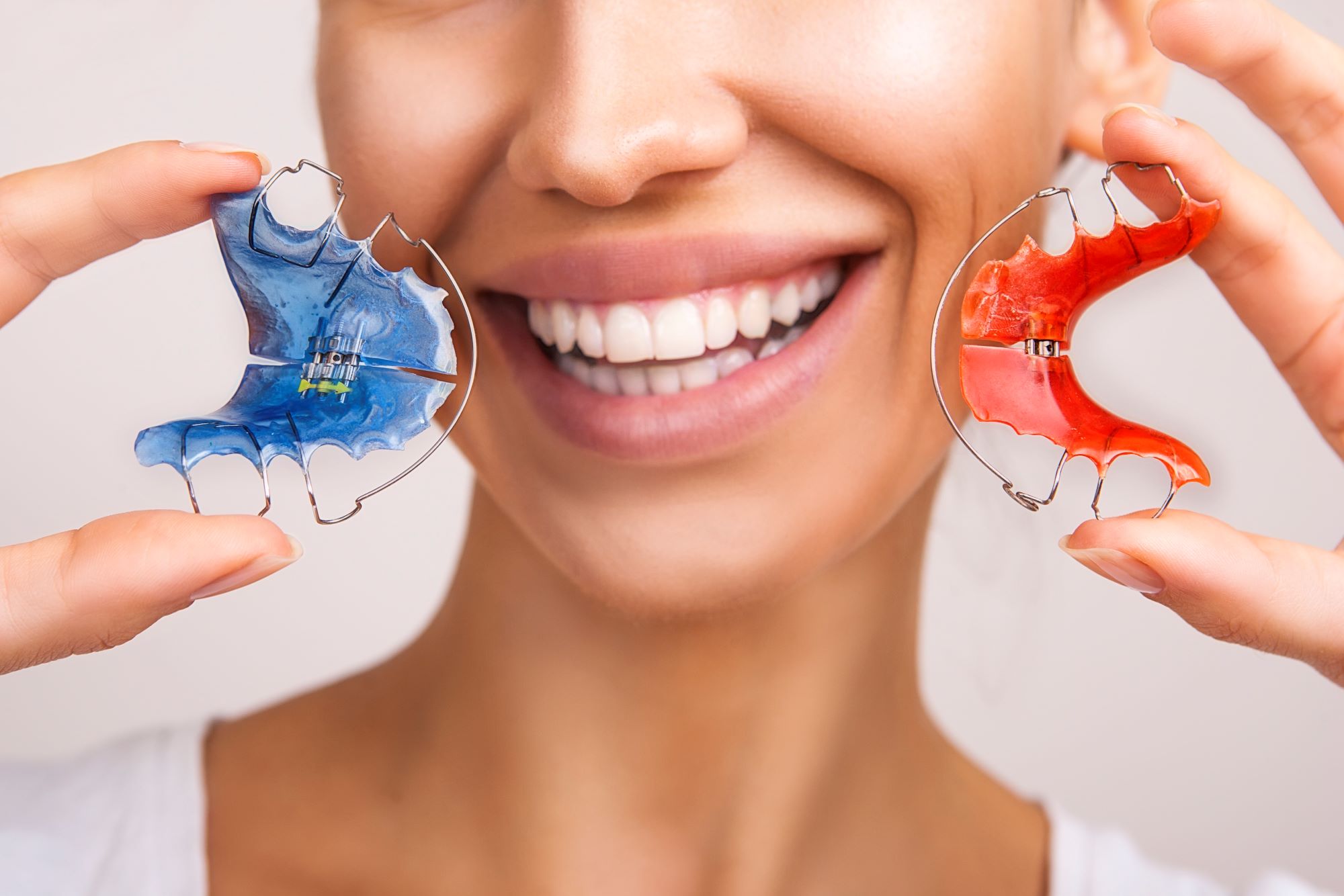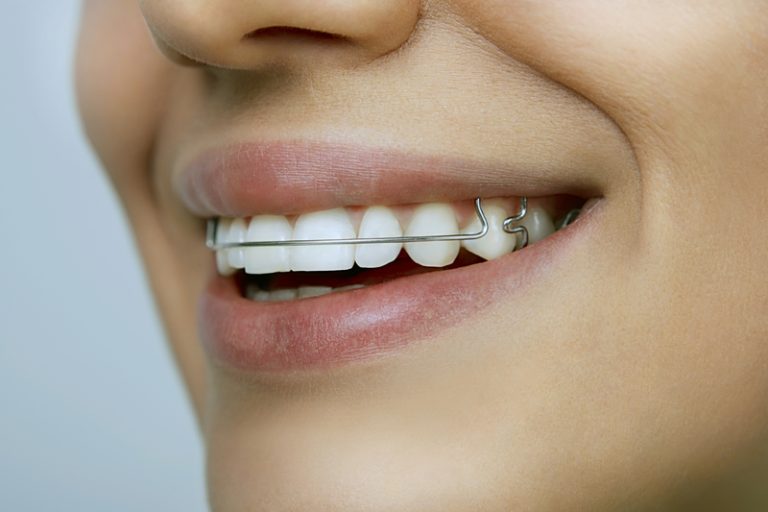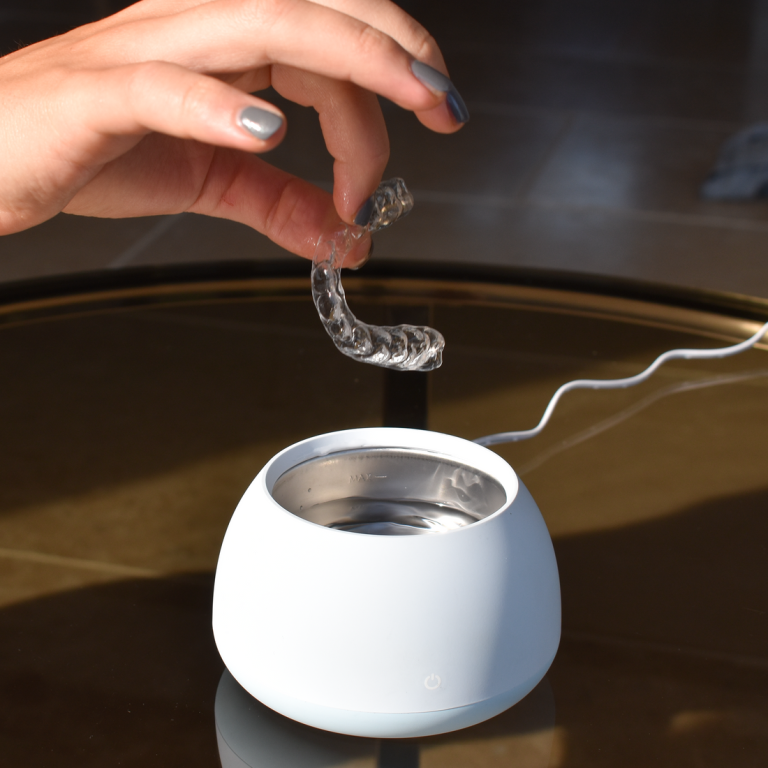What are Retainers: Ultimate Guide to Dental Care
Last Updated on 1 month by DR. ALBIN SIPES
Retainers are dental devices used to keep teeth aligned. They maintain the position of teeth after braces.
Retainers are essential in orthodontics. After braces, teeth can shift back to their original positions. This is where retainers come into play. They hold teeth in their new alignment. There are different types of retainers. Some are removable, while others are fixed.
Both types have their pros and cons. Wearing retainers as prescribed ensures lasting results. They are typically custom-made for each patient. This ensures comfort and effectiveness. Understanding retainers is crucial for maintaining a perfect smile. Keep reading to learn more about retainers and their benefits.
Introduction To Retainers
Retainers are devices used in orthodontics. They help keep teeth in their new position after braces. Retainers ensure your teeth stay aligned. They are custom-made for each person.
Retainers are important for maintaining your smile. They are usually made of plastic or metal. Wearing retainers as directed by your orthodontist is crucial. This will help prevent your teeth from shifting back to their original position.
Purpose Of Retainers
Retainers serve several important purposes:
- Keep teeth in their new position
- Prevent teeth from moving back
- Help maintain the results of orthodontic treatment
- Assist in stabilizing the bite
Using a retainer ensures that your teeth stay aligned. This is crucial for maintaining the benefits of orthodontic treatment. Wearing a retainer as directed can prevent costly future treatments.
Types Of Retainers
There are several types of retainers. Each type serves a different purpose. The choice of retainer depends on your needs. Here are the main types:
| Type | Description |
|---|---|
| Hawley Retainers | Made of plastic and metal. They are adjustable and durable. |
| Clear Retainers | Made of clear plastic. They are less visible and custom-fit. |
| Fixed Retainers | Bonded to the back of the teeth. They are not removable. |
Hawley retainers are traditional and adjustable. They are made of metal wires and acrylic. These retainers are durable and can last many years.
Clear retainers are made of transparent plastic. They are less noticeable and fit snugly over the teeth. Clear retainers are popular due to their aesthetics.
Fixed retainers are bonded to the back of the teeth. They are not removable. Fixed retainers provide continuous support for teeth alignment.

How Retainers Work
Retainers play a crucial role in orthodontics. They help maintain the position of teeth after braces. Understanding how retainers work helps in appreciating their importance in dental health.
Mechanism Of Action
Retainers keep your teeth in place. They do this by applying gentle pressure. This pressure prevents teeth from shifting back to their original positions.
| Type of Retainer | How It Works |
|---|---|
| Fixed Retainers | Bonded to the back of teeth. Provide constant support. |
| Removable Retainers | Can be taken out. Must be worn as per the orthodontist’s advice. |
Duration Of Use
The duration of wearing retainers varies. It depends on individual cases.
Some may need to wear them full-time initially. Later, they might switch to wearing them only at night.
Orthodontists often recommend lifelong use of retainers. This ensures teeth remain in their desired positions.
- First few months: Full-time wear
- After stabilization: Night-time wear
- Long-term: Periodic use as advised
Consistency is key. Regular use of retainers ensures long-lasting results.
Different Types Of Retainers
Retainers are essential for maintaining the alignment of your teeth after orthodontic treatment. They help keep your smile perfect and prevent teeth from shifting back to their original position. Let’s explore the different types of retainers available.
Fixed Retainers
Fixed retainers are permanently attached to the back of your teeth. They consist of a thin wire that is bonded to the teeth using a special adhesive. These retainers are often used for the lower front teeth, as they are more prone to shifting.
- Advantages:
- Always in place
- No need to remember to wear them
- Invisible from the front
- Disadvantages:
- Harder to clean
- Can cause discomfort initially
Removable Retainers
Removable retainers can be taken out for eating, brushing, and flossing. They are typically made of plastic or acrylic and a wire that runs across the front teeth. These retainers are custom-made to fit your mouth.
- Advantages:
- Easy to clean
- Can be removed when needed
- Adjustable if necessary
- Disadvantages:
- Easy to lose
- Must remember to wear them
- Can be uncomfortable at first
Clear Aligners
Clear aligners are a type of removable retainer that looks similar to Invisalign. They are made of a clear plastic material that is almost invisible when worn. These retainers are custom-made to fit snugly over your teeth.
- Advantages:
- Virtually invisible
- Comfortable to wear
- Easy to clean
- Disadvantages:
- Requires discipline to wear
- Can be lost easily
- May need replacement over time
Choosing the right type of retainer is crucial for maintaining your new smile. Consult with your orthodontist to find the best option for your needs.
Benefits Of Using Retainers
Retainers are essential for maintaining that perfect smile after orthodontic treatment. They offer multiple benefits that go beyond just keeping your teeth straight. In this section, we will explore the key benefits of using retainers. We will discuss how they help in maintaining teeth alignment and preventing relapse.
Maintaining Teeth Alignment
After braces, your teeth need time to settle. Retainers hold your teeth in their new positions. This prevents them from shifting back. Regular use of retainers ensures your teeth stay aligned.
There are different types of retainers:
- Fixed retainers: These are bonded to the back of your teeth.
- Removable retainers: These can be taken out for cleaning.
Both types are effective in maintaining teeth alignment. Your orthodontist will recommend the best option for you.
Preventing Relapse
Teeth have a natural tendency to move back to their original position. This is called relapse. Retainers prevent this by holding your teeth in place. Without a retainer, your teeth could shift within months.
Using a retainer as prescribed can save you from future orthodontic treatments. It ensures the hard work of braces does not go to waste. Here are some tips to prevent relapse:
- Wear your retainer as instructed.
- Keep your retainer clean.
- Visit your orthodontist for regular check-ups.
Following these tips will help you maintain your beautiful smile.
Proper Care For Retainers
Proper care for retainers is essential for maintaining their longevity and effectiveness. If you don’t take care of your retainer, it may become damaged, dirty, or lose its effectiveness. Follow these guidelines to ensure your retainer stays in good condition.
Cleaning Techniques
Keeping your retainer clean is crucial. Follow these cleaning techniques:
- Daily Cleaning: Brush your retainer daily with a soft-bristle toothbrush. Use mild soap and warm water.
- Deep Cleaning: Use a retainer cleaning solution once a week. Follow the instructions on the package.
- Avoid Hot Water: Never use hot water. It can warp the retainer.
Storage Tips
Proper storage prevents damage and loss. Use these storage tips:
- Use a Case: Always store your retainer in a hard case. It protects from damage.
- Keep Away from Pets: Pets may chew on retainers. Keep them out of reach.
- Dry Before Storing: Ensure your retainer is dry before storing. It prevents bacteria growth.
Common Mistakes
Avoid these common mistakes to keep your retainer in good shape:
- Leaving the retainer out in the open.
- Using toothpaste to clean the retainer. It can be abrasive.
- Skipping daily cleaning.
Proper care for retainers ensures they remain effective and hygienic. Follow these simple steps to maintain your retainer’s condition.

Common Issues With Retainers
Retainers are essential for maintaining your teeth’s alignment after braces. Yet, they can come with several challenges. Understanding these issues can help you address them effectively. In this section, we will discuss some common problems associated with retainers.
Discomfort And Soreness
One of the most frequent issues with retainers is discomfort and soreness. This usually occurs when you first start wearing the retainer. Your mouth needs time to adjust to the new appliance. The pressure applied by the retainer can cause minor pain or irritation.
If the discomfort persists, it might indicate that the retainer does not fit properly. A poorly fitting retainer can lead to more significant issues. In such cases, it’s important to consult your orthodontist. They can adjust the retainer for a better fit.
To ease the soreness, you can try the following:
- Rinse your mouth with warm salt water
- Use over-the-counter pain relievers
- Apply a cold compress to the outside of your mouth
Damage And Wear
Retainers are susceptible to damage and wear over time. This can happen due to various reasons. Regular use, accidents, or improper care can all contribute to this issue.
Here are some common causes of retainer damage:
- Chewing on hard foods
- Dropping the retainer
- Using hot water to clean it
To prevent damage, follow these care tips:
- Handle your retainer gently
- Avoid chewing on non-food items
- Clean it with lukewarm water and mild soap
If your retainer gets damaged, do not attempt to repair it yourself. Always consult your orthodontist for a replacement or professional repair.
| Issue | Solution |
|---|---|
| Discomfort | Consult orthodontist for adjustments |
| Damage | Handle with care, avoid hard foods |
When To Replace Retainers
Retainers are essential for maintaining the alignment of teeth after braces. Over time, retainers can wear out and need replacement. Knowing when to replace them ensures your teeth stay in their correct position. Let’s explore some signs and professional recommendations.
Signs Of Wear
Regularly inspect your retainer for any signs of damage. Here are some common signs:
- Cracks or Breaks: Any visible cracks or breaks indicate the retainer is no longer effective.
- Discoloration: Yellowing or discoloration can mean the material is degrading.
- Loose Fit: If your retainer feels loose, it may not be holding your teeth correctly.
- Unpleasant Odor: Persistent bad smell even after cleaning suggests it’s time for a new retainer.
If you notice any of these signs, consider replacing your retainer soon.
Professional Recommendations
Consulting with your orthodontist is crucial for maintaining your retainer. Here are some professional recommendations:
- Regular Check-ups: Schedule regular appointments to ensure your retainer fits well.
- Cleaning Routine: Follow the cleaning instructions provided by your orthodontist.
- Replacement Schedule: Orthodontists usually recommend replacing retainers every one to two years.
Following these recommendations can help you maintain your retainer’s effectiveness. Regular care and timely replacement keep your smile perfect.
Cost And Insurance For Retainers
Understanding the cost and insurance for retainers is crucial for planning. Retainers are common in orthodontic treatments. They help maintain teeth alignment after braces. Knowing the costs and insurance options can save money. Let’s dive into these aspects.
Average Costs
The cost of retainers can vary. Several factors influence the price:
- Type of retainer: fixed or removable
- Material used: metal or plastic
- Dental provider’s location
Here is a breakdown of the average costs:
| Type of Retainer | Average Cost |
|---|---|
| Hawley Retainer | $150 to $300 per arch |
| Clear Plastic Retainer | $100 to $250 per arch |
| Fixed Retainer | $250 to $500 |
Insurance Coverage
Insurance coverage for retainers can vary. Most dental insurance plans cover orthodontic treatments. Retainers are often considered part of these treatments.
Here are key points about insurance coverage:
- Check if your plan includes orthodontic benefits.
- Verify the coverage percentage for retainers.
- Understand the lifetime maximum benefit for orthodontics.
Some insurance plans may cover up to 50% of the cost. Others may have different terms. Always contact your insurance provider for details. This helps avoid surprises in costs.
In summary, knowing the cost and insurance details for retainers helps in financial planning. This ensures you maintain your beautiful smile without stress.
Consulting With Your Orthodontist
Consulting with your orthodontist is a crucial step in the process of getting retainers. It’s essential to understand the importance of these consultations. They help ensure that your retainer fits well and functions correctly. Let’s explore what to expect during these visits.
Initial Consultation
Your first meeting with the orthodontist is the initial consultation. During this visit, the orthodontist will examine your teeth. They will discuss your orthodontic history. They may take X-rays or dental impressions. This helps them understand your needs. This consultation sets the foundation for your treatment plan.
Follow-up Visits
Follow-up visits are equally important. These visits allow the orthodontist to monitor your progress. They ensure that your retainer fits correctly over time. Adjustments may be needed as your teeth shift. Regular follow-ups help maintain the effectiveness of your retainer.
| Visit Type | Purpose |
|---|---|
| Initial Consultation | Examining teeth, discussing history, taking X-rays |
| Follow-Up Visits | Monitoring progress, adjusting retainer |
Key Points:
- Initial consultation is the first step.
- Follow-up visits ensure retainer effectiveness.
- Both types of visits are crucial for success.
Consulting with your orthodontist is a continuous process. It helps in achieving the best results with your retainer.
Faqs About Retainers
Retainers are essential tools in orthodontics. They help maintain the position of your teeth after braces. Many people have questions about them. Here, we address some of the most common concerns and provide expert answers.
Common Concerns
- How long do I need to wear my retainer? – The duration varies. Generally, full-time wear is recommended for the first few months. Afterward, nighttime use is often sufficient.
- Are retainers uncomfortable? – Initially, you may feel some discomfort. It usually subsides after a few days.
- Can I eat while wearing my retainer? – No, you should remove your retainer before eating. This prevents damage and maintains hygiene.
- How do I clean my retainer? – Use a soft toothbrush and mild soap. Avoid hot water as it can warp the retainer.
- What if I lose my retainer? – Contact your orthodontist immediately. A replacement should be made as soon as possible to prevent teeth from shifting.
Expert Answers
| Question | Answer |
|---|---|
| Can retainers fix minor misalignments? | Retainers are designed to maintain alignment, not correct it. Consult your orthodontist for any concerns. |
| How often should I see my orthodontist for retainer check-ups? | Regular check-ups every 6 months are advisable. This ensures your retainer is functioning properly. |
| What types of retainers are there? | There are three main types: Hawley retainers, Essix retainers, and bonded retainers. Each serves a unique purpose. |
| Can I adjust my retainer myself? | No, adjustments should only be made by a professional. DIY adjustments can cause damage. |
| Are there any lifestyle changes needed with retainers? | Avoid sticky and hard foods. Maintain excellent oral hygiene. These habits ensure the longevity of your retainer. |
These FAQs cover the most common concerns and expert answers about retainers. Understanding these aspects can help you maintain your smile effectively.

Conclusion
Retainers play a crucial role in maintaining your dental health. They help keep teeth aligned after braces. Wearing them as advised by your dentist is essential. Clean your retainer regularly to avoid bacteria buildup. Also, store it properly to prevent damage.
If you lose or damage it, contact your dentist immediately. Retainers may feel uncomfortable at first, but you’ll get used to them. Consistency is key. Follow your dentist’s instructions for the best results. Your smile will thank you in the long run.



